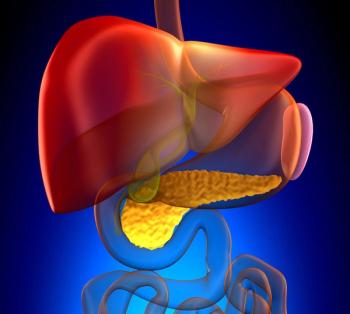
Oncology NEWS International
- Oncology NEWS International Vol 11 No 11
- Volume 11
- Issue 11
Minorities Less Likely Than Whites to Receive Good Pain Care
NEW YORK-Blacks, Hispanics, and other minorities are less likely than whites to receive appropriate analgesia, as illustrated in the cancer literature and anecdotal reports from those who work with minority populations, said Stacie T. Pinderhughes, MD. "This is a high-risk group with regard to adequate and appropriate treatment of pain," said Dr. Pinderhughes, assistant professor of geriatrics and internal medicine, Mount Sinai School of Medicine, New York.
NEW YORKBlacks, Hispanics, and other minorities are less likely than whites to receive appropriate analgesia, as illustrated in the cancer literature and anecdotal reports from those who work with minority populations, said Stacie T. Pinderhughes, MD. "This is a high-risk group with regard to adequate and appropriate treatment of pain," said Dr. Pinderhughes, assistant professor of geriatrics and internal medicine, Mount Sinai School of Medicine, New York.
Studies show that physicians will evaluate pain equally, regardless of the patient’s pain or ethnicity, Dr. Pinder-hughes said at an American Medical Association media briefing on pain management. However, when it comes to treatment, there appears to be a significant disparity in prescribing practices.
In one study of cancer patients, 65% of minority patients did not receive guideline-recommended analgesic prescriptions. By contrast, 50% of nonminority patients received appropriate pain therapy (Ann Intern Med 127:813-816, 1997).
A variety of factors may influence whether or not minorities receive appropriate prescriptions. One major barrier to treatment is limited access to opioids in neighborhood pharmacies. A colleague of Dr. Pinderhughes at Mount Sinai found that pharmacies in predominantly minority neighborhoods were less likely to stock opioid pain medications than pharmacies in predominantly nonmi-nority neighborhoods (N Engl J Med 342:1023-1026, 2000).
Dr. Pinderhughes told the story of a Puerto Rican-American assistant who 2 years ago brought her best friend home to die of metastatic cancer. She went to a local pharmacy in Spanish Harlem, which could not fill her friend’s morphine prescriptionnor could four other pharmacies in the neighborhood.
"She had to go back to Mount Sinai, ultimately, to get her prescription filled, so her best friend could die 2 days later at home in relative comfort," Dr. Pinder-hughes recalled.
Clinician Education
Clinicians who are uncomfortable prescribing pain medications may hinder minority access to appropriate pain medication. Some may harbor prejudices or preconceptions regarding minorities that may make them hesitant to prescribe opioids. Still others are simply not educated in appropriate pain therapy. Dr. Pinder-hughes, who graduated from medical school in 1994, noted that pain management was never part of her curriculum.
Such clinician barriers may gradually fade as educational efforts take hold. Programs such as Education for Physicians on End-of-Life Care (EPEC) promote clinical competency in pain issues.
Medical schools are now required to provide curriculum and training in the principles of pain assessment and management, and state-level initiatives reinforce the need for appropriate medical education.
California, for example, passed a law making medical schools’ accreditation contingent on offering a specific course in pain management, said Rollin M. Gallagher, MD, director of the Pain Medicine and Rehabilitation Center, MCP-Hahnemann University, Philadelphia. "It’s a growing phenomenon in terms of mandating this," Dr. Gallagher said.
Dr. Pinderhughes recommended that physicians, when confronted with a minority patient who refuses pain medication, should elicit the true reason for the patient’s resistance by asking questions, listening to the patient, and addressing specific concerns.
For example, patients themselves may fear addiction or may worry that family members, friends, or clergy may judge them for taking drugs. Others may worry that by calling attention to the pain, the doctor will be less likely to treat the cancer.
Articles in this issue
about 23 years ago
Zoledronic Acid Reduces SREs in Solid Tumorsabout 23 years ago
Study Supports Wider Use of SLN Biopsy in Breast Cancerabout 23 years ago
Polyglutamate-Paclitaxel Controls Recurrent Ovarian Cancerabout 23 years ago
9cRA Shown to Reverse Premaliagnant Changes in Ex-Smokersabout 23 years ago
FDA Names New ODAC Chairabout 23 years ago
Neoadjuvant Weekly Paclitaxel Effective in Advanced Breast Cancerabout 23 years ago
Docetaxel Plus Gemcitabine Promising in Advanced Pancreatic Cancerabout 23 years ago
Polysaccharides Unique Targets for Immunotherapyabout 23 years ago
Genetic Fingerprinting Shows Distinct Sarcoma Subsetsabout 23 years ago
Education on Increased ICP Reduces Nursing ‘Headache’Newsletter
Stay up to date on recent advances in the multidisciplinary approach to cancer.















































































